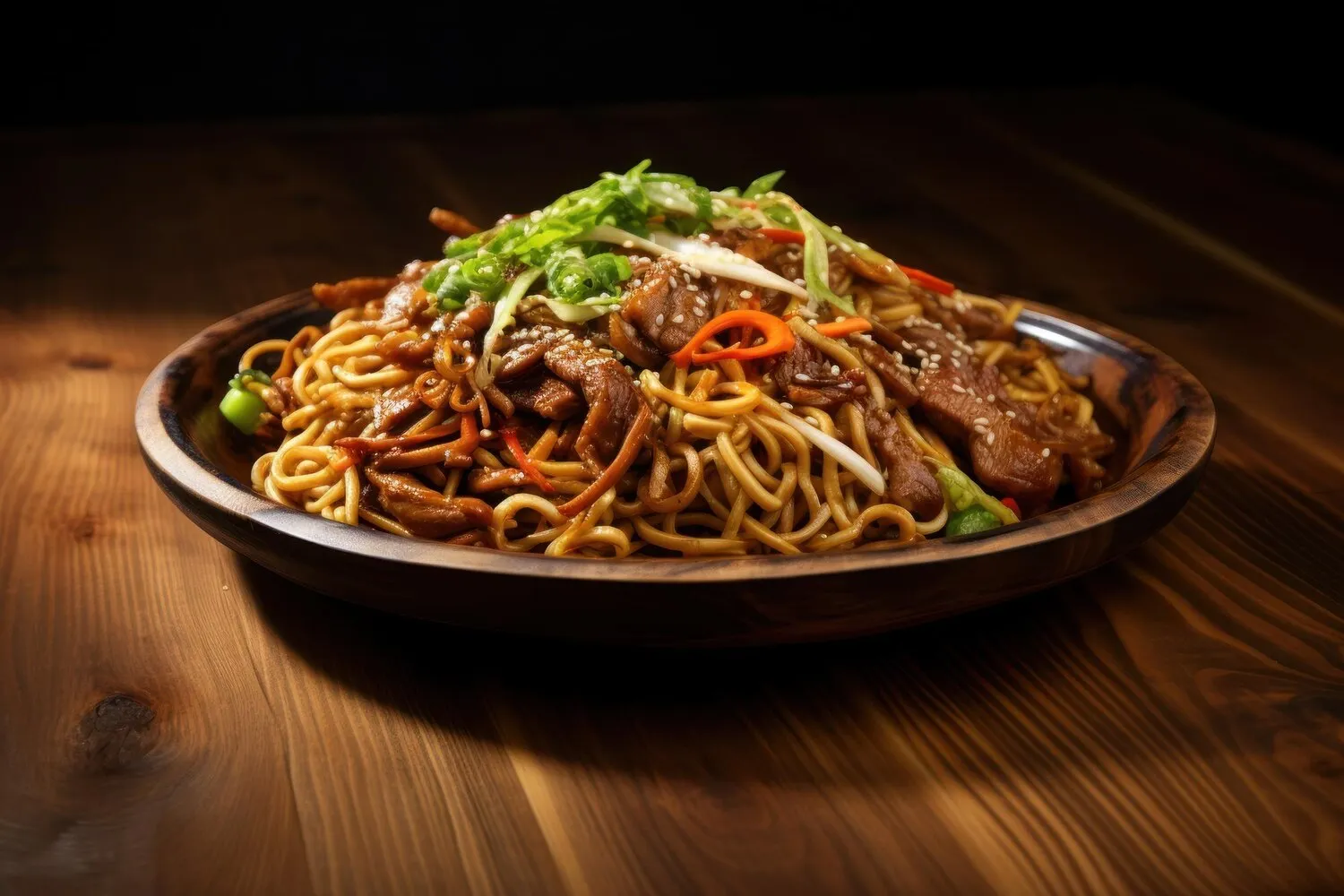
Yakisoba
A popular Japanese noodle stir-fry dish with vegetables and meat.
Nutrition Facts
* The % Daily Value (DV) tells you how much a nutrient in a serving of food contributes to a daily diet. 2,000 calories a day is used for general nutrition advice.
Yakisoba's origins can be traced back to Chinese-inspired noodle dishes that became popular in Japan during the early 20th century. It evolved as a convenient and affordable street food, adapting to Japanese tastes and ingredients.
Yakisoba is deeply ingrained in Japanese popular culture, widely enjoyed at festivals, street stalls, and casual eateries.
Festival Food Staple
Yakisoba is a quintessential festival food, often sold at yatai (food stalls) during matsuri (festivals) throughout Japan. The aroma of sizzling yakisoba is synonymous with festive occasions.
Everyday Meal
Beyond festivals, yakisoba is a common and convenient everyday meal, often prepared at home or found in casual restaurants and supermarkets. It's considered an affordable and satisfying dish.
Regional Variations
While the basic recipe remains consistent, regional variations exist. For example, some regions might incorporate different seafood, vegetables, or sauces, reflecting local preferences.
Yakisoba offers a savory and slightly sweet flavor profile, achieved through a combination of stir-fried ingredients and a signature umami-rich sauce.
The primary flavor components include the savory notes from the meat (typically pork, but sometimes beef or chicken), the sweetness from the Yakisoba sauce (which usually contains Worcestershire sauce, soy sauce, oyster sauce, ketchup, and sugar), the earthy taste of the vegetables (such as cabbage, onions, and carrots), and the richness from the noodles (usually steamed Chinese-style wheat flour noodles). The sauce often provides a tangy, slightly vinegary finish.
Noodle Preparation
Separate and loosen the noodles before stir-frying to ensure even cooking and prevent clumping. Pre-cooking the noodles slightly can also help.
High Heat Cooking
Use high heat to stir-fry the ingredients quickly, allowing them to caramelize and develop deeper flavors. This also helps prevent the noodles from becoming soggy.
Sauce Timing
Add the Yakisoba sauce towards the end of the cooking process to prevent it from burning and to allow it to coat the noodles evenly.
Toppings and Garnishes
Enhance the flavor and presentation of Yakisoba with toppings such as aonori (dried green seaweed flakes), beni shoga (pickled ginger), katsuobushi (dried bonito flakes), and Japanese mayonnaise.
Explore additional Noodle Dish dishes and restaurants
Explore Noodle DishDiscover top dining spots and culinary experiences in Rio Claro.
Explore Rio ClaroLearn more about the food culture, restaurant scene, and culinary heritage of Brazil.
Explore Brazil